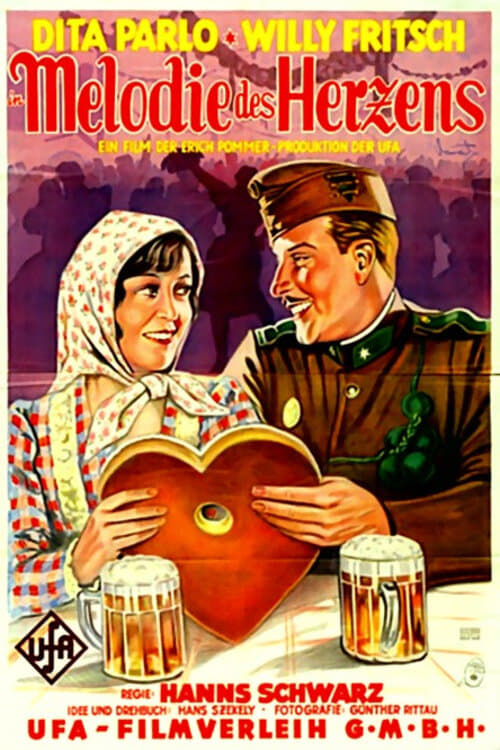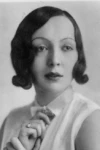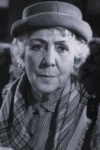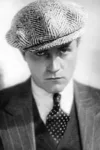Melodie des Herzens (1929)
December 15, 1929Release Date
Melodie des Herzens (1929)
December 15, 1929Release Date
Plot.
Where to Watch.
Details.
Wiki.
Melody of the Heart (German: Melodie des Herzens) is a 1929 German musical film directed by Hanns Schwarz and starring Dita Parlo, Willy Fritsch and Gerő Mály.
The film was the first successful sound film produced by the German major studio Universum Film AG (Ufa) and was credited with establishing the popularity of the operetta film. It was shot in Hungary. Initially the film was intended to be silent, but halfway through production its producer Erich Pommer was ordered by his superiors to convert it into a sound film.Ufa had recently made a deal with the Klangfilm syndicate (consisting of Siemens & Halske, AEG, and Polyphon-Werke AG (who sold Polydor records) to license the Tri-Ergon sound film system, under the name 'Ufa-Klang'. A previous attempt in 1925 by Ufa to use an earlier version of the same system, at the time owned by Klangfilm's former competitor, Tobis, had ended in failure.The film premiered at the Ufa-Palast am Zoo in Berlin on 16 December 1929. It was released in four different languages: German, English, French and Hungarian. Such multiple-language versions, which had been pioneered by British International Pictures, were popular in Europe until dubbing became more widespread.










